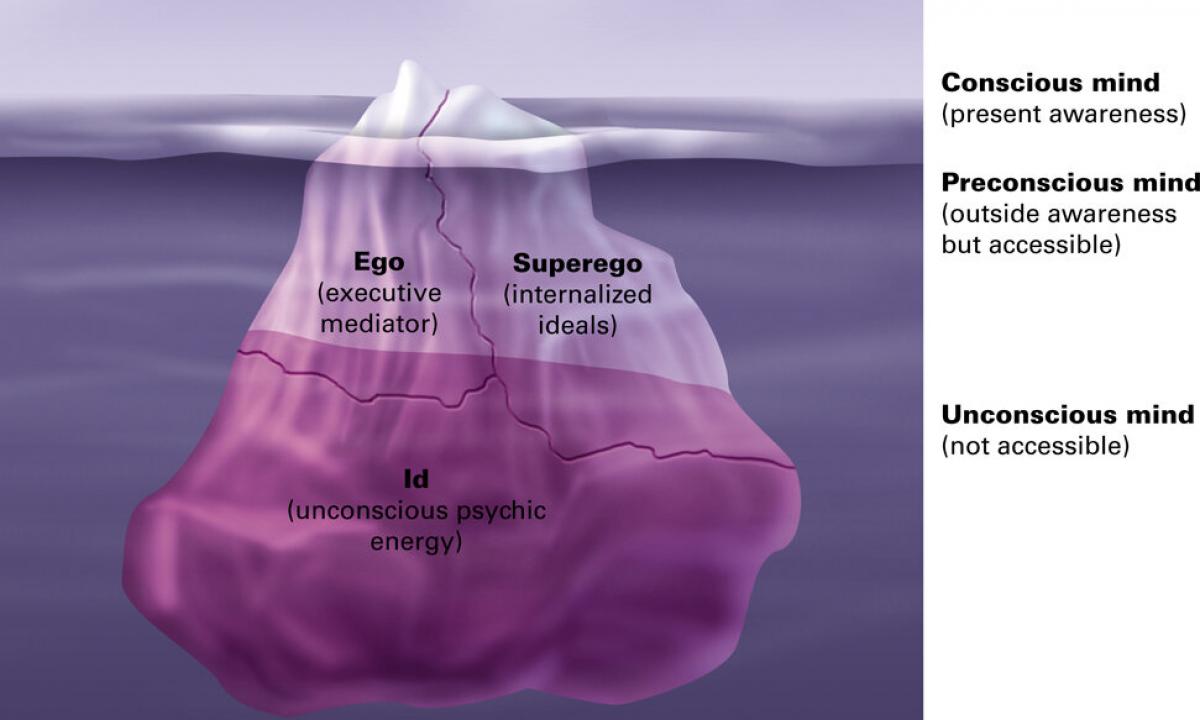What represents the identity of the person? Answers to this question not one ten-year-old were looked for by many leading psychologists of the world. For a long time all assumptions and hypotheses of mechanisms and the nature of personal development were created in several main theories. The most popular among them: the analytical theory of K.G. Jung, the humanistic theory which authors are K. Rogers and A. Maslow, the cognitive theory of the identity of J. Kelly, the activity theory of S.L. Rubenstein and a number of other researchers, behavioural and dispositive theories, and at last, the psychodynamic theory known as classical psychoanalysis which author is the Austrian psychologist Siegmund Freud. In this list and the brightest among other an example of a research of structure of the personality we will also talk about the last point in more detail.
Siegmund Freud – structure of the personality
Before emergence of the Freudian theory, studying structure of the personality came down to the phenomenon of consciousness of the person. The hidden motives of behavior and its feature were not considered in a deep section. Freud considered that mentality this not only conscious. It is a mnogomerna and consists of several levels and components which reflect not only conscious, but also subconscious processes. Thus, the mental structure of the personality according to Freud represents three interconnected elements – unconscious, preconsciousness and consciousness. The concept of preconscious processes comes down to the fact that they not always are in consciousness, but can be caused by sometimes it.
During this period, when Freud actively developed the hypothesis, application in psychological practice of a method of hypnosis was rather widespread. However, according to the father of psychoanalysis the introduction of the person to a condition of hypnosis makes impossible attempt to remove unconscious experience in a conscious state. For this reason the psychologist created the methods of work with patients. Interpretation of dreams and a method of free associations became them well-known and today.
Thus, the structure of the personality and her mentality according to Freud has three components: It, Ego and SuperEgo.
- It. Primitive matter which is responsible for congenital processes. This unconscious which desires, pleasures and a libido of the person enter.
- Ego (I). Consciousness which follows reality. Vyrabayvayet mechanisms which allow to adapt to the environment.
- SuperEgo (Over I). Unconscious, acquired before emergence of function of the speech. It includes standards of behavior, rules, the bans and various taboos which are a product of influence of other people.
The certain place in psychological structure of the personality according to Freud is taken by development stages through which before maturing there goes the child.
- oral – is characterized with receiving pleasure through a mouth. Any feeling of deficiency of these pleasures in the childhood can bring in adulthood to manifestation of alcoholism, smoking or gluttony;
- anal – is connected with control over excrements. Emergence of a special delay of a conclusion a calla from an organism for the sake of receiving pleasure from the subsequent simplification is possible. At advanced age it can have consequences in the form of greed or frequent locks;
- genital – a stage which is shown in personal sexual identification. Feature is here that the child, realizing the floor, considers the parent as the potential sexual partner. Such concepts as Oedipus's complex and Electra's complex entered by Freud are connected with this phenomenon. That is boys consider mother as the sexual partner and are jealous of her the father as the rival, and at girls the same is shown in relation to fathers with jealousy of mother.
According to Freud's psychoanalysis the structure of the harmonious personality means an equal combination It and SuperEgo. Any overweight in one of these substances can lead to deviations in mental processes and even to developing of pathologies.
You should not forget also about protective mechanisms which are developed thanks to interaction of all three components of the personality. They allow the person to adapt in the world around and is adequate to interact with it. Main protective mechanisms of the person following:
- denial – suppression of the internal impulses proceeding from SuperEgo;
- rationalization – a possibility of reasonable justification of acts which contradict internal moral standards;
- formation of reactions – unpleasant motive is expressed in motive of opposite type;
- projection – attributing to other people of own shortcomings;
- replacement – partial satisfaction of unacceptable motive with way, admissible personal standards of moral and morality.
The structure of the personality according to Freud has a set of sides. Not without reason psychoanalysis still is one of the leading directions in psychology. Though many decades Freud's works were not published and in every possible way were exposed to criticism, they reached our days, and are a fine example of how to develop in themselves the harmonious personality, working not only on the consciousness, but also on novel corners of subconsciousness.

